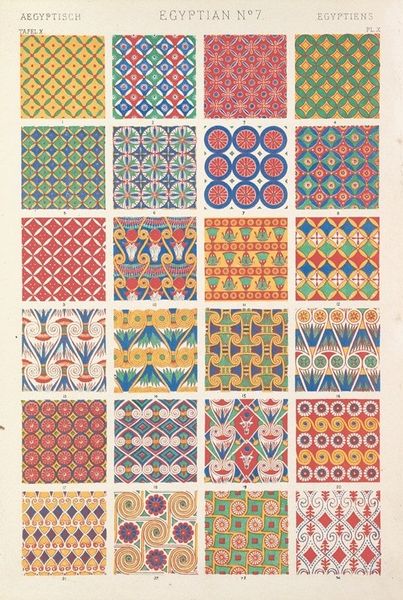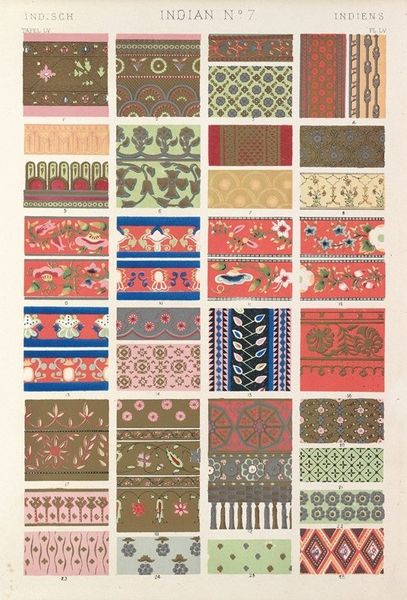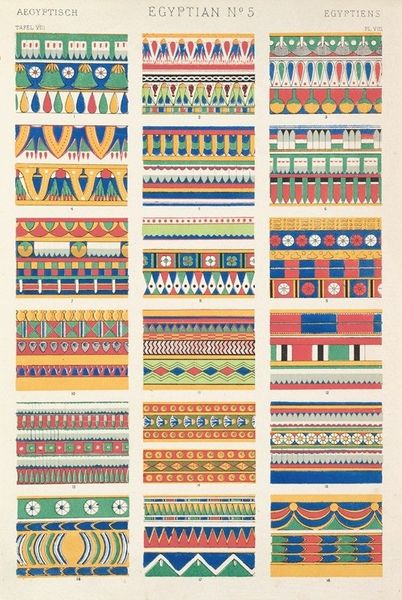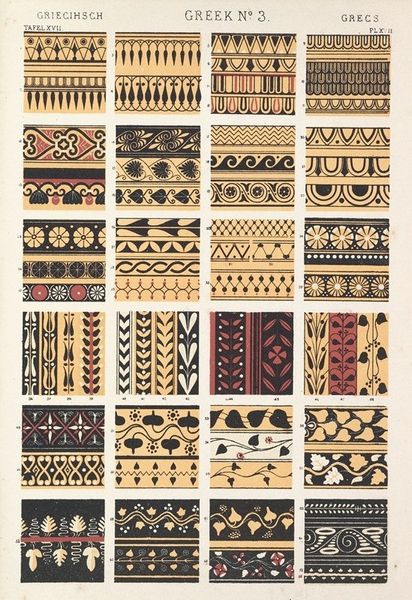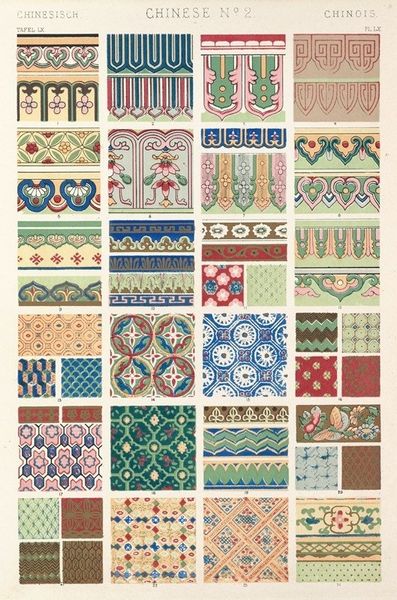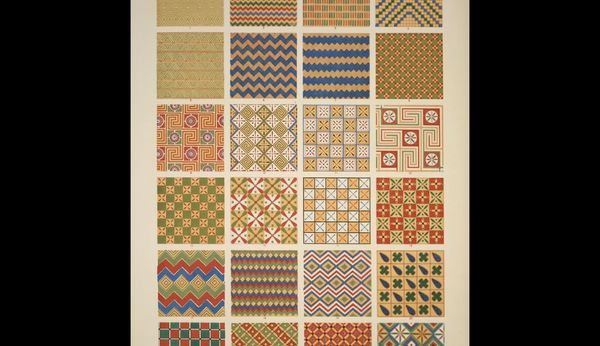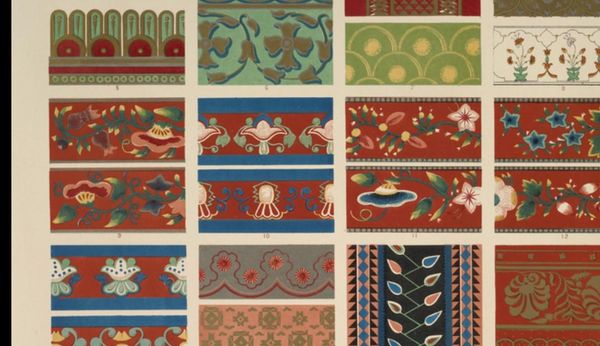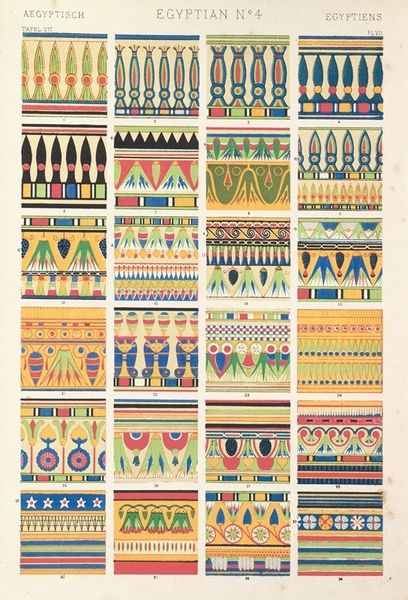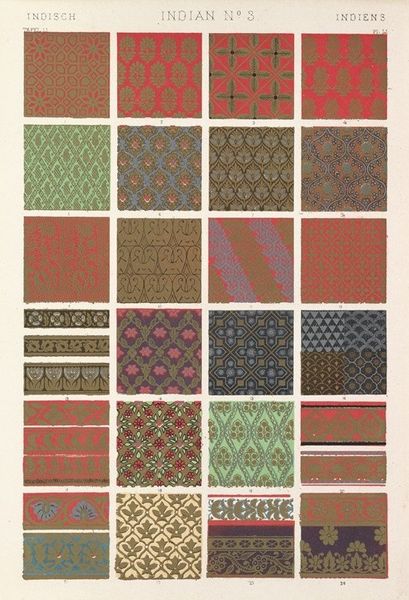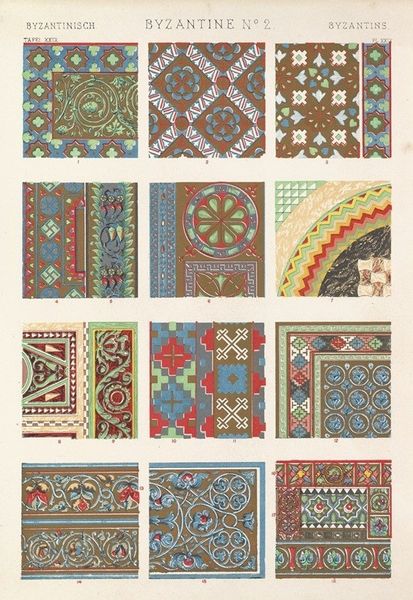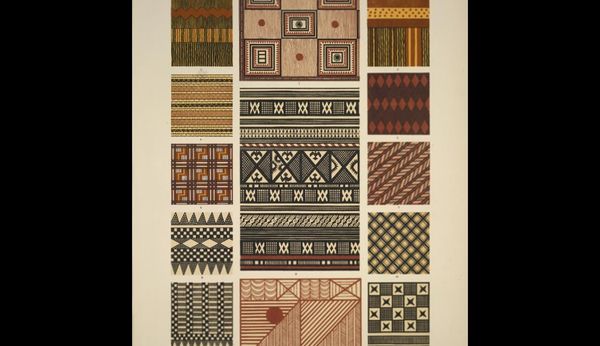
graphic-art, collage, print, textile
#
pattern heavy
#
graphic-art
#
collage
# print
#
textile
#
fashion and textile design
#
pattern design
#
geometric
#
ancient-mediterranean
#
repetition of pattern
#
vertical pattern
#
regular pattern
#
pattern repetition
#
textile design
#
decorative-art
#
imprinted textile
#
layered pattern
Copyright: Public Domain: Artvee
Curator: Immediately, the sheer density of pattern is overwhelming! I’m captivated by the vibrant geometry. Editor: This is "Egyptian No. 8," a print by Owen Jones dating back to 1856. Jones, an influential figure in the 19th-century design reform movement, dedicated much of his career to the study and application of historical ornament. Curator: Ornament, yes! Each motif feels almost like a hieroglyphic language of its own. The cultural memory embedded in these forms is incredible. Is that intentional? Editor: Absolutely. Jones believed that understanding the design principles of past cultures, like ancient Egypt, could lead to a more truthful and meaningful modern aesthetic. There is this relationship to the cultural narrative and design principles of Jones’ era that speak about power in his work. Curator: He seems to be channeling a powerful sense of visual order here; the use of repetitive motifs creates a strong sense of unity. But it is striking how he chooses the elements and puts them together. I would never believe this comes from Egypt otherwise! Editor: Precisely. There's tension. This work embodies the intersection between historical revivalism and colonialism, revealing the power dynamics inherent in selectively interpreting and appropriating another culture’s visual language. Jones extracts these images and turns them into his work to show his power and status. Curator: I also feel that repetition, in and of itself, has psychological impact. It's almost mesmerizing. Each little segment gives meaning to the bigger picture. What emotions and sensations were the ancient Egyptians who conceived these patterns hoping to transmit, and why? Editor: That’s a wonderful question! And while the exact intentions of those original designers are forever beyond our grasp, we can still appreciate how Jones filters the patterns. Curator: In this collage, it is easy to be confused because everything appears next to everything. It is also like a reflection of Jones’ mindset in those Victorian times when science and belief intermingled in curious ways. Editor: Seeing this piece through that lens provides valuable insights, bringing both historical context and awareness of sociopolitical undertones to what might first seem like a series of lovely designs. Curator: And the reverse is equally valid; these visual patterns transmit historical memories and beliefs, inviting introspection about civilizations, and connecting emotions and symbolism. Editor: In conclusion, "Egyptian No. 8" speaks about the enduring power of symbols in a wide array of meanings in both the artwork itself and what its origins represent.
Comments
No comments
Be the first to comment and join the conversation on the ultimate creative platform.
